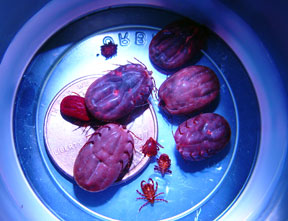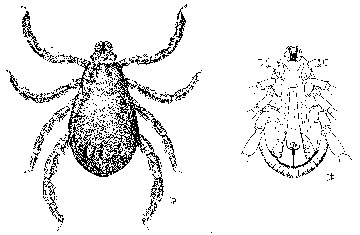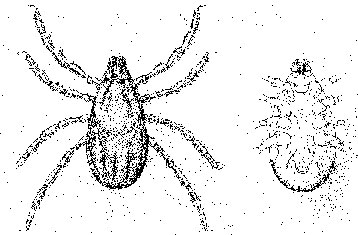Brown dog ticks, the other dog tick
Editor’s note: This article is from the archives of the MSU Crop Advisory Team Alerts. Check the label of any pesticide referenced to ensure your use is included.
If the ticks we most often encounter outdoors aren’t disgusting enough, then please consider the brown dog tick (Rhipicephalus sanguineus). This tick can infest homes by the thousands and is the only tick that occurs in Michigan that can complete its life cycle indoors. The only good thing about this tick is that it rarely, if ever, feeds on people.
The brown dog tick is probably the most widely distributed tick in the world and is found throughout the United States, though it is much more common in warmer areas in the country. Oddly, I received two samples of the brown dog tick this past March. One came from a lady in Haslett and the other from a vet clinic in Romulus. The lady in Haslett collected hers from her bed. Both samples included fully engorged females that were bursting with eggs. Yech!
Adult brown dog ticks are tear drop-shaped and resemble deer ticks in that they do not have white markings on their backs. The head and mouthparts are distinctive (see the accompanying drawings). These ticks will often emerge in great numbers from furniture, baseboards, moldings, electrical outlet boxes, curtains, etc. The brown dog tick has been reported to be a vector of Rocky Mountain spotted fever in the western hemisphere. After mating, females drop from the host and seek out sheltered areas where they lay 1,000-3,000 eggs. Double yech! The female dies soon after laying her eggs. The eggs hatch in 19-60 days depending on temperature and humidity. The microscopic 6-legged larvae attach to a dog at the first opportunity, but if they cannot find a host, will survive for eight months without a bloodmeal.
After feeding, a larva drops from the host and seeks a sheltered area to molt into an eight-legged reddish-brown nymph. The nymph seeks out and attaches to the poor dog again to take another bloodmeal, but if they can’t find a host they too can survive for extended periods without food or water. Once engorged, the nymph drops from the host and hides once again to molt into the adult stage. Adults then seek out and attach to the poor dog again to take yet another bloodmeal and mate. Adults can survive for 18 months without food! Under normal environmental conditions and host availability, there may be up to four generations per year. Control of the brown dog tick requires extreme persistence by the pet owner and may require the services of professional pest control operator. If the infestation is throughout the residence, the dog, home and yard will need to be chemically treated at the same time. The primary objective when applying a pesticide to control this pest is to concentrate on those areas which are frequented by the dog. Incomplete treatments will prolong the infestation and result in an over use of pesticides. Insecticides to control this pest should have a reasonable residual efficacy. Products like Bayer Advanced Home Insect Control (cyfluthrin) or Othro’s Home Insect Defense (bifenthrin) are long-lasting and registered for use inside homes. Be sure to read and follow all instructions and safety precautions found on the label before using any pesticide.

A sample of brown dog ticks sent in by a vet clinic
this past March.
Line drawings of a female and male brown dog tick showing their tear drop shape, deeply cleft first coxae and distinctively shaped heads. The dorsal view is on the left. Drawings taken from Ticks of Veterinary Importance, USDA Handbook No. 485 (out of print).



 Print
Print Email
Email

